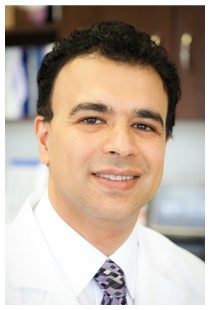Is Sunblock Safe and Effective?
Sunblock is not always as safe as some people think. About half of the 500 tested sunblock products may cause or spread skin cancer because they contain vitamin A or its derivatives, according to an independent research group. A certain sunblock might prevent sunburn, but it may not efficiently prevent the ultraviolet light from destroying your skin cells. Additionally, researchers at the Environmental Working Group (EWG) believe some sunblock products may cause tumors and lesions. According to the EWG, only 39 of the 500 tested sunblock products are considered safe and effective to use. The report cites these problems with bogus sun protection factor (SPF) numbers:
- The use of the hormone-disrupting chemical oxybenzone, which penetrates the skin and enters the bloodstream.
- Overstated claims about performance.
- The lack of needed regulations and oversight by the Food and Drug Administration.
But the most alarming disclosure in this year’s report is the finding that vitamin A and its derivatives, retinol and retinyl palmitate, may speed up the onset of the cancer that sunscreen is supposed to prevent. Vitamin A products are added to the sunblock formulations because it is an anti-oxidant and it may slow skin aging. However, researchers found out that vitamin A products can be photocarcinogen, meaning the possibility that it results in cancerous tumors when used on skin exposed to sunlight. “In that yearlong study, tumors and lesions developed up to 21 percent faster in lab animals coated in a vitamin A-laced cream than animals treated with a vitamin-free cream,” the report said. These data confirmed the previous data that were obtained by the FDA researchers about 10 years ago. “Retinyl palmitate was selected by (FDA’s) Center for Food Safety and Applied Nutrition for photo-toxicity and photocarcinogenicity testing based on the increasingly widespread use of this compound in cosmetic retail products for use on sun-exposed skin,” according to the October 2000 report by the National Toxicology Program.
Are any sunblocks safe?
An ideal sunblock would completely block the UV rays (including UV A and B) that cause sunburn, immune suppression, and damaging free radicals. This sunscreen would remain effective on the skin for several hours and not form harmful ingredients when degraded by UV light. Typically, it should not contain oxybenzone or vitamin A and it will not be spray or powder based. Unfortunately, there are few products in the US that meet all of these criteria. One can either buy “chemical” sunscreens, which have inferior stability, penetrate the skin, and may disrupt the body’s hormone systems, or “mineral” sunblocks, which use zinc and titanium dioxide to provide a physical barrier to UV rays. While the mineral sunblocks are better, the industry is increasingly using nanosized titanium dioxide which may have serious health implications. The nano particles absorb easily through the skin and may lead to serious health problems. “There is no doubt that an effective sunscreen can prevent sun damage, but people should be aware of the potential side effects of chemicals that can be found in some of those products,” said Dr. Reza F. Ghohestani, Director of Texas Institute of Dermatology. “People should depend on hats, clothing, and shade rather than sunscreens for protection from the sun.”
Recommended Sunscreens
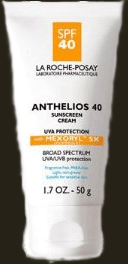 |
|
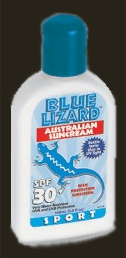 |
Australian Sunblock Baby, SPF 30+ |
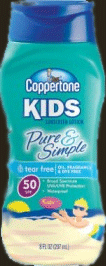 |
Skin, Sun and SunBlock
Dr. Ghohestani’s interview with San Antonio Express News (Updated by TXID)
No SPF? UVA and UVB will leave you RED. Dr. Reza F. Ghohestani, of the Texas Institute of Dermatology, recommends that people wear at least SPF 30 every time they step outdoors. If there is one thing Dr. Ghohestani wants people to know about the sun, he emphasizes that sun protection needs to start at an early age. Dr. Ghohestani said recent studies show that people who were sunburned as children are three to five times more likely to get skin cancer as an adult. It’s very, very important to emphasize sun protection for kids, Dr. Ghohestani said. Most people think that’s not a big deal and then they end up having cancer 20-50 years later. According to the National Cancer Institute, skin cancer is the most common form of cancer in the U.S. Every year, more than 1 million Americans are diagnosed with skin cancer. Ultraviolet rays cause cancer by damaging the cell’s center, which controls the proliferation of cells. These rays are subdivided into three categories according to their wavelength: UVA, UVB and UVC. Research and studies show that UVB rays directly cause these mutations in the DNA. Ghohestani said that to avoid these harmful changes, it is important for people to protect their skin from the sun.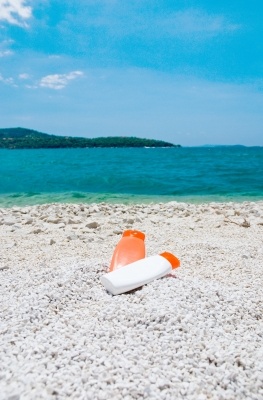 Dr. Ghohestani encourages people to use sunscreens that block both UVA and UVB rays every day. We know recently that UVA is damaging to skin and chronic exposure is harmful to the skin as well, he said. We see sun-damaged skin on the left side of drivers from the windows in their car windows only block out UVB rays, not UVA rays. He said people who do not put on sunscreen every day, especially those who spend a lot of time driving, tend to have more wrinkles on the left side of their face because of sun damage. Ghohestani recommends that people wear at least SPF 30 every time they leave their home, even on cloudy days and road trips. An adult should apply about two tablespoons of sunscreen on their face at least 30 minutes before going out. Sunscreen should be reapplied every two hours. He explained that without sun protection, a fair-skinned person turns red after about 10 minutes in the sun. If that same individual uses sunscreen with an SPF of 30, it will take approximately 150 minutes for his or her skin to turn red. In general, he said it is not necessary to apply sunscreen with an SPF higher than 50. However, people should consider waterproof sun protection when they are swimming because UV rays can still be harmful through one or two feet of water. He recommends that people buy hypoallergenic sunscreen that offers protection from the sun’s harmful rays. Stores typically sell a mixture of sunblocks that physically block UV rays and sunscreen that contains chemicals, which absorb the rays. He recommends the sunblock that physically blocks UV rays. He suggests people also protect themselves by wearing protective clothing, finding shade, and avoiding direct sun exposure from 10 a.m. to 4 p.m. during summer months. Hats and clothing with high UPF factors help decrease UV exposure. All fabrics have different UPF factors: closely woven fabric, dark colors, and dry cloth have high UPFs. Dr. Ghohestani urges taking precautions against sun exposure. We discourage people to go out and expose their skin to any ultraviolet radiation either through sun or tanning salons; he said there is a correlation between tanning and wrinkles. Instead of tanning, he recommends sunless tanning products commonly sold as creams gels, lotions, and sprays. However, in the event that sunburn has already occurred due to tanning or sun exposure, he suggests waiting until it goes away or applying hydrocortisone if it is not blistered. If a burn blisters and does not disappear after a few days, see a dermatologist. Source: Samantha Hensley | 210SA contributor (with some modifications)
Dr. Ghohestani encourages people to use sunscreens that block both UVA and UVB rays every day. We know recently that UVA is damaging to skin and chronic exposure is harmful to the skin as well, he said. We see sun-damaged skin on the left side of drivers from the windows in their car windows only block out UVB rays, not UVA rays. He said people who do not put on sunscreen every day, especially those who spend a lot of time driving, tend to have more wrinkles on the left side of their face because of sun damage. Ghohestani recommends that people wear at least SPF 30 every time they leave their home, even on cloudy days and road trips. An adult should apply about two tablespoons of sunscreen on their face at least 30 minutes before going out. Sunscreen should be reapplied every two hours. He explained that without sun protection, a fair-skinned person turns red after about 10 minutes in the sun. If that same individual uses sunscreen with an SPF of 30, it will take approximately 150 minutes for his or her skin to turn red. In general, he said it is not necessary to apply sunscreen with an SPF higher than 50. However, people should consider waterproof sun protection when they are swimming because UV rays can still be harmful through one or two feet of water. He recommends that people buy hypoallergenic sunscreen that offers protection from the sun’s harmful rays. Stores typically sell a mixture of sunblocks that physically block UV rays and sunscreen that contains chemicals, which absorb the rays. He recommends the sunblock that physically blocks UV rays. He suggests people also protect themselves by wearing protective clothing, finding shade, and avoiding direct sun exposure from 10 a.m. to 4 p.m. during summer months. Hats and clothing with high UPF factors help decrease UV exposure. All fabrics have different UPF factors: closely woven fabric, dark colors, and dry cloth have high UPFs. Dr. Ghohestani urges taking precautions against sun exposure. We discourage people to go out and expose their skin to any ultraviolet radiation either through sun or tanning salons; he said there is a correlation between tanning and wrinkles. Instead of tanning, he recommends sunless tanning products commonly sold as creams gels, lotions, and sprays. However, in the event that sunburn has already occurred due to tanning or sun exposure, he suggests waiting until it goes away or applying hydrocortisone if it is not blistered. If a burn blisters and does not disappear after a few days, see a dermatologist. Source: Samantha Hensley | 210SA contributor (with some modifications)
* If the Content contained on this site contains medical or health sciences information, it is intended for answering some common skin care questions. No suggested test or procedure should be carried out without visiting a health care professional and unless, in the reader’s judgment, its risk is justified. Because of rapid advances in the medical sciences, we recommend that the independent verification of diagnoses and drug dosages should be made. NEITHER TEXAS DERMATOLOGY INSTITUTE NOR ANY OF ITS AFFILIATES OR LICENSORS SHALL BE LIABLE TO YOU OR ANYONE ELSE FOR ANY LOSS OR INJURY, CAUSED IN WHOLE OR PART BY ITS NEGLIGENCE OR CONTINGENCIES BEYOND ITS CONTROL IN PROCURING, COMPILING, INTERPRETING, REPORTING OR DELIVERING INFORMATION THROUGH THE SITE. IN NO EVENT WILL TEXAS DERMATOLOGY INSTITUTE, ITS AFFILIATES OR LICENSORS BE LIABLE TO YOU OR ANYONE ELSE FOR ANY DECISION MADE OR ACTION TAKEN BY YOU IN RELIANCE ON SUCH INFORMATION. TEXAS DERMATOLOGY INSTITUTE AND ITS AFFILIATES AND LICENSORS SHALL NOT BE LIABLE TO YOU OR ANYONE ELSE FOR ANY DAMAGES (INCLUDING, WITHOUT LIMITATION, CONSEQUENTIAL, SPECIAL, INCIDENTAL, INDIRECT, OR SIMILAR DAMAGES) EVEN IF ADVISED OF THE POSSIBILITY OF SUCH DAMAGES. You hereby agree to indemnify, defend and hold Texas Dermatology Institute, its directors, officers, shareholders, parents, subsidiaries, affiliates, agents and licensors harmless from and against any and all liability, losses, damages and costs, including, without limitation, reasonable attorneys’ fees, arising from your use of the Site or Content.





